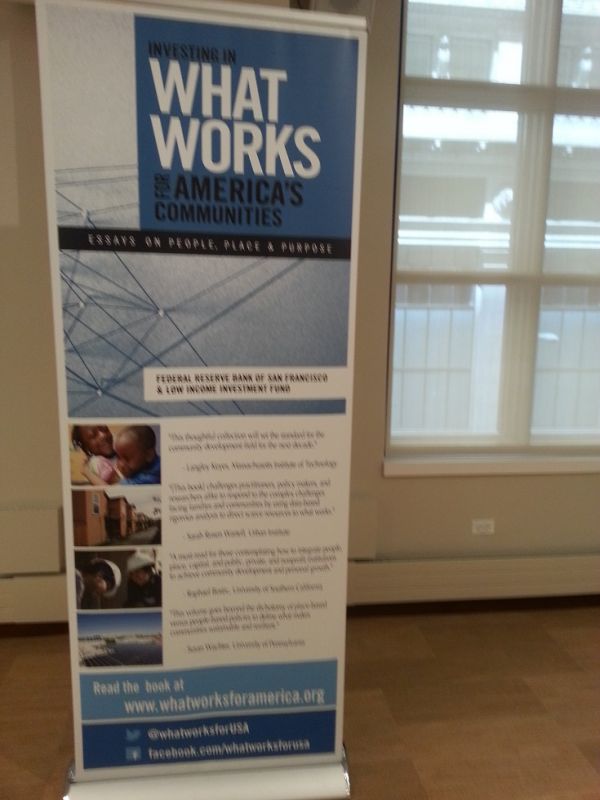One in five children in the U.S. currently live in poverty, according to a study by The Urban Institute. Further, about 2.7 million children lived with an unemployed parent during a typical month in 2012. These are troubling statistics, by any standard. According to the Federal Reserve Bank of San Francisco and the nonprofit Low Income Investment Fund (LIIF), in order to build healthy, productive communities and work on solving problems such as this, it’s necessary to move out of traditional policy silos and approach problems in a more holistic manner.
In the publication “Investing in What Works For America’s Communities,” the two entities offer a collection of essays focusing on ideas to improve economic prosperity from new policy to technology to integrated community development efforts.
The initial idea for a book, published in September of 2012, came from LIIF, which focuses on creating opportunities for low-income communities. The organization had been pushed to think about a book-length project by one of their funders, the Citi Foundation.
The San Francisco Fed was motivated to help produce the book, in part, because the Fed bank was “discouraged with the progress community development had made in past few decades in its efforts to fight poverty and revitalize communities,” says Scott Turner, vice president, community development and economic education, Federal Reserve Bank of San Francisco. Yet the San Francisco Fed was hopeful of some of the new academic research, new partnerships such as the one between health and community development it has been promoting, and new business models.
They were “all pointing the way to how we could do our work better and get better outcomes,” says Turner. “It seemed like a good time to get all the best ideas we knew about the future of community development down on paper.”
This summer, the Federal Reserve Bank of Chicago, in conjunction with the MacArthur Foundation, held a regional meeting to discuss the publication. Panelists included representatives from organizations including the Cara Program, which was founded in 1991 and aims to address the global challenges impacting the poor; and Forward Community Investments, which provides loans and advisory services to nonprofit organizations serving the most in-need communities.

Photo credit: Christine Marie Nielsen
Photo caption: Sign from Fed event
According to the Chicago Fed, despite a strong manufacturing employment base in the Fed’s seventh district – which includes parts of Illinois, Indiana, Wisconsin, Michigan and all of Iowa – difficulties which include deindustrialization and high rates of foreclosure are taking a toll.
What the region has going for it, however, is that the economic region is home to more than 1,100 colleges and universities, 69 Fortune 500 companies, almost a quarter of the nation’s financial institutions, and a fifth of the nation’s manufacturing jobs. It is the mixture of these regional assets that allow for potential solutions to the challenges the community faces.
According to Turner, community affairs-type work within the Federal Reserve System dates back to the early 1980’s when the Board of Governors in DC asked each of the 12 Federal Reserve Banks to establish a “Community Affairs Officer” to help implement the 1977 Community Reinvestment Act (CRA). The Board wanted an additional group at each Reserve Bank to help banks understand and comply with the CRA and to generally highlight opportunities for banks to lend and invest in lower-income communities.
Over the decades this Community Affairs function within the Fed has grown to a point where the Board and each of the Reserve Banks have departments (typically now called “Community Development”) of from six to 14 total staff each.
This mission “supports both the Fed’s role in maximizing economic growth and its role in ensuring financial stability in markets,” says Turner. Ensuring that “economic growth and well-functioning markets find their way to lower-income communities, the focus of the CRA.”
Each Reserve Bank’s community development website can be found by going to the bank’s site and clicking on the word “Community” at the top.




